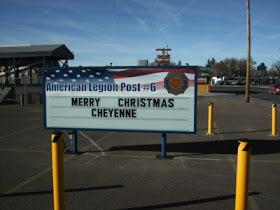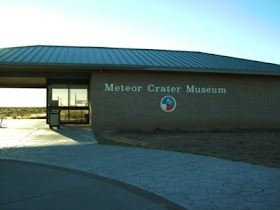Cheyenne is the capital and largest city of the U.S. state of Wyoming and the county seat of Laramie County. It is the principal city of the Cheyenne, Wyoming, Metropolitan Statistical Area which encompasses all of Laramie County. The population is 57,618 at the 2010 census. Cheyenne is the northern terminus of the extensive and fast-growing Front Range Urban Corridor.
HistoryOn July 5, 1867, General Grenville M. Dodge and his survey crew platted the site now known as Cheyenne in Dakota Territory (later Wyoming Territory). This site was chosen as the point at which the Union Pacific Railroad crossed Crow Creek, a tributary of the South Platte River. The city was not named by Dodge, as his memoirs state, but rather by friends who accompanied him to the area Dodge called "Crow Creek Crossing." It was named for the American Indian Cheyenne nation, one of the most famous and prominent Great Plains tribes closely allied with the Arapaho.
There were many from a hundred miles around who felt the construction of the Union Pacific Railroad through the area would bring them prosperity. By the time the first track was built into Cheyenne November 13, 1867, over four thousand people had migrated into the new city.
Those who did not leave with the westward construction of the railroad were joined by gamblers, saloon owners, thieves, opportunists, prostitutes, displaced cowboys, miners, transient railroad gangs, proper business men, soldiers from "Camp Cheyenne," (later named Fort D.A. Russell, now F.E. Warren Air Force Base), and men from Camp Carlin, a supply camp for fifteen northern army posts on the frontier
As the capital of the Wyoming Territory and the only city of any consequence, as well as being the seat of the stockyards where cattle were loaded on the Union Pacific Railroad, the city's Cheyenne Club was the natural meeting place for the organization of the large well-capitalized ranches called the Wyoming Stock Growers Association. (See Johnson County War of 1892, the largest of the "range wars" of early Wyoming history).
Geography & ClimateCheyenne is located at 41°8′44″N 104°48′7″W / 41.14556°N 104.80194°W / 41.14556; -104.80194 (41.145548, -104.802042). Lying near the southeast corner of the state, it is one of the least centrally located state capitals in the nation (together with cities such as Carson City, Nevada and Juneau, Alaska).
According to the United States Census Bureau, the city has a total area of 54.9 km² (21.2 mi²). 54.7 km² (21.1 mi²) of it is land and 0.2 km² (0.1 mi²) of it (0.38%) is water.
Cheyenne, like most of the rest of Wyoming, is semi-arid (Koppen BSk). Winters are cold and moderately long, but relatively dry, with a January average of 25.9 °F (−3.4 °C), highs that fail to reach freezing occur 37 days per year, and lows dip to the 0 °F (−18 °C) mark on 12 nights.
However, the coldness is often interrupted, with chinook winds blowing downslope from the Rockies that can warm conditions, bringing the high above 50 °F (10 °C) on 20 days from December to February. Snowfall is greatest in March and April, averaging 60 inches (152 cm) for the season, yet thick snow cover rarely stays.
Summers are warm, with a July average of 67.7 °F (19.8 °C), and highs reaching 90 °F (32 °C) 8 times. Spring and autumn are quick transitions, with the median freeze dates being May 12 and September 26. The annual precipitation tends to be concentrated from May to August and is low during fall and winter, contributing to the area's 2980 hours (~68%) of the possible total, of sunshine per year.
At the 2005-2007 American Community Survey 3-Year Estimates, the city's population was 89.3% White (79.2% non-Hispanic White alone), 12.7% Hispanic or Latino (of any race), 4.5% Black or African American, 2.5% American Indian and Alaska Native, 2.1% Asian and 6.4% from some other race. 22.5% of the total population had a Bachelor's degree or higher.
As of the census of 2000, there were 53,011 people, 22,324 households, 14,175 families residing in the city, and 81,607 people residing in the Metropolitan Statistical Area making it the largest city and metropolitan area in the state of Wyoming. The population density was 969.6/km² (2,511.4/mi²). There were 23,782 housing units at an average density of 435.0/km² (1,126.7/mi²). The racial makeup of the city was 88.11% White, 2.78% Black or African American, 0.81% Native American, 1.06% Asian, 0.11% Pacific Islander, 4.44% from other races, and 2.69% from two or more races. 12.54% of the population were Hispanic or Latino of any race.
There were 22,324 households out of which 30.4% had children under the age of 18 living with them, 49.2% were married couples living together, 10.6% had a female householder with no husband present, and 36.5% were non-families. 31.3% of all households were made up of individuals and 10.6% had someone living alone who was 65 years of age or older. The average household size was 2.33 and the average family size was 2.93.
The median income for a household in the city was $38,856, and the median income for a family was $46,771. Males had a median income of $32,286 versus $24,529 for females. The per capita income for the city was $19,809. About 6.3% of families and 8.8% of the population were below the poverty line, including 11.1% of those under age 18 and 5.8% of those age 65 or over.
GovernmentCheyenne's government consists of a mayor and a city council. The mayor is elected in a citywide vote. The city council has nine members each of whom are elected from one of three wards. Each ward elects three members.
Education
Primary and secondary schoolsPublic education in the city of Cheyenne is provided by Laramie County School District #1. The district is served by three high schools, Central High on the northwest side, East High on the east side, and South High on the south side.
Colleges and universitiesCheyenne is home to Laramie County Community College (LCCC) and Institute of Business & Medical Careers.
EconomyThe state of Wyoming operates a multitude of offices in downtown Cheyenne. Many area residents are employed by or are dependent on the U.S. Air Force, through F.E. Warren Air Force Base to the west of the city, or by the Wyoming National Guard. Railroads remain a major economic force for the city, with both the Burlington Northern Santa Fe and Union Pacific employing many residents.
Steps have been taken in recent years to diversify the city's economy. Lowe's and Wal-Mart both operate distribution centers on the city's outskirts. Sierra Trading Post is headquartered in the city and also operates its distribution and fulfillment centers in the city.
Cheyenne's high elevation, coupled with its position on the continent, make it one of the windiest cities in America. The abundance of wind makes Cheyenne an opportune place to develop wind energy. Wind turbines are currently being placed around Laramie County.
Laramie County Community College is home to a leading wind energy technician program, where students learn to maintain these turbines. The opening of a Vestas wind turbine blade assembly in nearby Weld County, Colorado, as well as other alternative energy manufacturing facilities around Colorado, are transforming the region into a center for alternative energy.
Great Lakes Airlines and Taco John's are headquartered in Cheyenne.


































